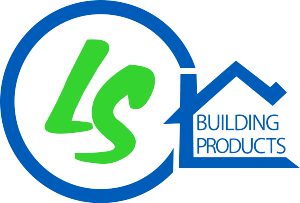In the realm of construction, accurate estimating stands at the heart of successful project management and client satisfaction. Whether you're spearheading a sprawling commercial project or transforming a residential space, the art of construction estimating is an indispensable skill every professional builder and remodeler must master.
Today, we're unraveling the complexities of construction estimating, offering insights that cater to both novices and seasoned professionals. Our goal? To empower you with knowledge and techniques that not only streamline your estimating process but also enhance the precision of your project bids.
The Pillars of Construction Estimating
Construction estimating extends beyond mere number crunching - it's about crafting a narrative of what a project entails, from inception to completion. Here’s how you can excel in each phase:
1. Understanding the Basics
Every show-stopping construction project begins with a solid foundation—accurate plans and specifications. Without clear and detailed plans, your project may stray off course, it could be full of misunderstandings and expensive revisions. Always start with, or insist on, complete, approved drawings. Know that without this clarity, your estimates risk being no more than educated guesses.
2. Moving Beyond Stick Estimating
Old-school stick estimating—itemizing each 'stick' or component of a project—is a time-honored tradition. However, it's also laborious, prone to errors, and notoriously inefficient. The future? Unit cost estimating. This method involves assigning costs to pre-defined assemblies or units of work, enabling swift, scalable, and replicable estimates that bring you back to your client's table faster, equipped with confidence and accuracy.
3. Leveraging Technology
In today's digital age, sticking to manual estimates isn't just old-fashioned—it's a competitive disadvantage. Construction estimating software revolutionizes how we approach estimates, minimizing human error and inefficiency. These tools support rapid data input, instant calculations, and easy adjustments, ensuring that your estimates are both quick and dependable.
4. The Importance of a Second Opinion
Regardless of your estimating method, validation is key. A second set of eyes on your figures can catch oversights and validate your assumptions. This step, often overlooked, is your safeguard against underbidding and the potential financial pitfalls that accompany it.
5. Continuous Learning and Adaptation
Finally, construction estimating isn't a static discipline; it evolves as new materials, methods, and technologies emerge. Staying informed through industry workshops, training sessions, and continuous learning resources is crucial. Your ability to adapt and grow your estimating skills will set you apart in a competitive marketplace.
Practical Steps to Improve Your Estimating Game
Enhancing your estimating precision involves both strategic and practical measures. Here are actionable steps to take your estimating skills to the next level:
- Invest in robust estimating software: Choose a platform that aligns with your projects' complexity and scale. Familiarize yourself with its features, and integrate it into your workflow for efficiency and accuracy gains.
- Develop an estimating checklist: This should cover every possible aspect of a project, from materials to subcontractor bids, ensuring nothing is overlooked.
- Update your cost database regularly: Market prices fluctuate. Keeping your database current is paramount for accurate estimates.
- Foster relationships with suppliers and subcontractors: They can offer insights into potential cost savings and alert you to upcoming price changes.
- Reflect on completed projects: Analyze completed jobs to understand where your estimates were spot-on and where they missed the mark. Use these insights to refine future estimates.
Final Thoughts
Construction estimating is more than numbers—it's the language of planning, risk management, and client communication. By mastering efficient estimating techniques and leveraging the latest tools, you set the stage not just for successful projects but for a thriving business.
Remember, every estimate is a learning opportunity, a chance to refine your craft. Approach each one with an open mind, a commitment to accuracy, and an unwavering focus on the client’s needs. In doing so, you don’t just build projects—you build trust, reputation, and long-lasting professional relationships.
Whether you're just stepping into the world of construction or you're looking to elevate your existing business practices, remember that accurate estimating is the keystone of project success. Equip yourself with the right tools, knowledge, and mindset to turn this challenging task into one of your strongest assets.
.png?width=98&height=67&name=Logo%20(13).png)
 The Basics of Construction Estimating" loading="lazy">
The Basics of Construction Estimating" loading="lazy">





